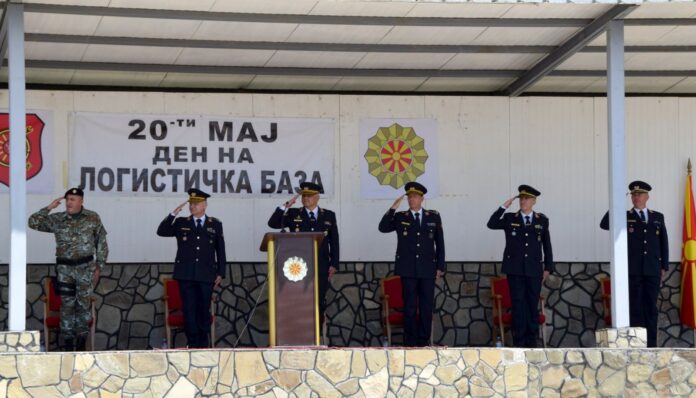The turmoil in Pakistan – Nova Makedonija

« Geopolitics », fueled by the still -current military incident in the Middle East between the two units and nuclear powers, India and Pakistan, makes a short historic cut of events and reminiscent of facts that put Britain (the United Kingdom) in the focus of its analytical observation, representing London’s policy
« Geopolitics News »: How Britons turned Indian subcontinent into chaos (2)
In August 1965, thousands of Pakistani troops, disguised as civilians (estimates vary between 5,000 and 40,000), crossed the agreed border in Kashmir to occupy key points in the region and cause discontent to encourage rebellion and escalate the conflict. At the same time, Pakistani guerrilla units were tasked with destroying transport infrastructure, weakening communication and logistics centers and attacking airports in order to create conditions for armed rebellion in the region.
Although India initially withdrew its forces, the operation itself was unsuccessful and is considered a fiasco among military analysts. The first mistake of the Pakistani military leadership was the wrong assessment of the situation in Kashmir – they believed the population was dissatisfied with the Indian government. However, Kashmir citizens did not start an uprising, but informed the Indian military about the infiltrated fighters, which allowed the details of the Gibraltar operation to be discovered. An additional problem was the lack of coordination between Pakistani units and the general disagreement with the plan between some Pakistani generals.
The Indian Army has launched an operation to expel Pakistani troops from Kashmir and Jamu. Indian forces have conquered Hadji Pyrrh, which has made it difficult for the Pakistani army. In response to the expulsion of their forces by India, Pakistan launched an attack on the Punjab region, officially launching the second Indian-Pakistani war on September 6, 1965. India responded with counterattacks on key positions in Western Pakistan, more precisely the city of Lahore. Although Indian forces have shown superiority in certain sectors, especially in tank battles, the number of casualties and the fear of further escalation have increased. In just over a month, over 5,000 people have been killed in the war, believed to be several hundred civilians.
The United States, the Soviet Union and the United Nations, have put pressure on both sides to sign a truce, and a ceasefire was introduced on September 22. The Prime Minister of the Soviet Union at the time, Alexei Kosigin, managed to take both sides of the Tashkent negotiating table, in today’s Uzbekistan. On January 10, 1966, Indian Prime Minister Lal Bahadur Shastri and Pakistani President Mohammed Ayub Khan signed a ceasefire agreement known as the Tashkent Declaration.
The declaration agreed to restore the state of the pre -war period, the exchange of military captives and attempts to establish long -term peace. It was also agreed that the two countries would not interfere with internal and foreign affairs and establish economic and diplomatic relations. Despite the diplomatic success, the citizens of India and Pakistan were not satisfied with this result.
From Tashkent to Yahya Han
Ayub Hahn’s fall was the result of a combination of internal political pressures, social unrest and loss of legitimacy after the 1965 war. The signing of the Tashkent Agreement was understood as a « betrayal » of national interests, especially on the issue of Kashmir. Citizens believed Ayub capitulated and did not use military successes well. It created a strong foundation for the rise of opposition parties such as the Pakistani People’s Party (PPP), which accused Ayub of corruption and authoritarianism. The party was founded by Zulfikar Ali Bhutto, who was forced by Ayub Jan to resign. Bhutto has publicly criticized the Tashkent Agreement and has become increasingly popular among citizens. The reason for the party’s founding is best seen through the economic policy led by Ayub Hahn. Most of the money was concentrated in western Pakistan, more precisely in a small elite. Rural areas were neglected, which was particularly felt in eastern Pakistan (present -day Bangladesh). Economic inequality has resulted in mass protests, strikes and unrest. Another important factor was the 1965 election controversy: the elections were held through the undemocratic « Basic Democracies » system, in which instead of direct voting of the citizens, the decision was made by a selected group of 80,000 local councilors. With accusations of manipulations and pressure, Ayub Hahn secured the victory against popular Fatima Gina, but lost political legitimacy. All of these factors have led to a high level of dissatisfaction in Pakistan, forcing Ayub Hahn to resign as president. Ayub asked Yahya Jan to introduce a state of war and take control of the country. And so Yahya Jan became Pakistan’s autocratic leader.
On the other hand, the political issue of East Pakistan was becoming an increasingly important factor. East Pakistan, today’s Bangladesh, is approximately 1,600 kilometers from Western Pakistan and is mostly populated by ethnic Bengali. Although residents of East Pakistan were mostly Muslims, there were major political and cultural differences between the two parts of the country. Although there was a larger population, East Pakistan had less political power, limited access to economic resources and weaker representation in the federal government. That is why the idea of independence began in 1952, when the Bengali demanded that the Bengal language be recognized as an equal official language. The main reason for East Pakistan’s political subordination was the concentration of military-political power in Western Pakistan. The Avami League, led by Sheikh Mujibur Rahman, claimed to win the 1965 elections, but then President Ayub Jan reportedly falsified the results. This continued the political marginalization of the Bengali population in Pakistan. Sheikh Mujibur Rahman led the so -called six -point movement, a political autonomy campaign for East Pakistan.
The main idea of the movement was the establishment of a federation with a very weak central government, which would be responsible exclusively for defense and foreign policy. The six points included demands for economic independence by introducing a special currency or a system of protection against the centralization of financial resources in Western Pakistan. According to the proposal, taxes would be collected by the provincial authorities, not the central government, while each unit of the federation would have complete control over foreign trade revenues. Eastern Pakistan should also have its own armed forces for defense purposes. Thanks to this program, Mujibur became the most popular politician in eastern Pakistan, and a strong autonomist movement was gathered around him. However, the initiative received negative reactions in Western Pakistan, where it was considered a threat to national unity and state sovereignty.
In November 1970, East Pakistan was hit by one of the deadliest humanitarian disasters in history. The cyclone Bola hit the areas of eastern Pakistan and Western Bengal in India, killing between 300,000 and 450,000 people. The slow response of the central Pakistani government and the indifferent stance of President Yahya Hahn sparked strong dissatisfaction with the population of eastern Pakistan, causing a wave of protests against authorities in Islamabad. The disaster and inefficiency of the state’s response further deepened high tensions and further fueled political radicalization and demands for greater autonomy.
When Yahya Jan took power in Pakistan, he established a military administration to control protests and unrest. He promised the return of a democratic government and the establishment of peace in the country, which initially made it very popular. However, this popularity did not last. In line with the promise, Yahya Jan held the first democratic elections in Pakistan in 1970. In those elections, the Avami League, led by Sheikh Mujibur Rahman, won an absolute majority in the National Assembly (160 of 300 seats), giving it the right to form a government. But Yahya Hahn and Zulfikar Ali Bhutto refused to hand over power, fearing that the implementation of the Avami League program could lead to the breakup of the state. Political negotiations between Yahya, Bhutto and Mujib did not lead to an agreement on the separation of power, sparking massive unrest and protests across East Pakistan. In response, the Pakistani army has launched a brutal repression known as Operation « Srchlight », aimed at violently suppressing the Bengali nationalist movement and protests. The operation was specifically aimed at students, intellectuals and political activists in Dhaka, where many crimes were committed, including mass killings, rape and other serious human rights violations. It is estimated that several hundred thousand civilians were killed in the operation, and millions were forced to flee to neighboring India. These events served as an immediate occasion for Bangladesh’s war of independence.
I thought Pohovski
(continues)








